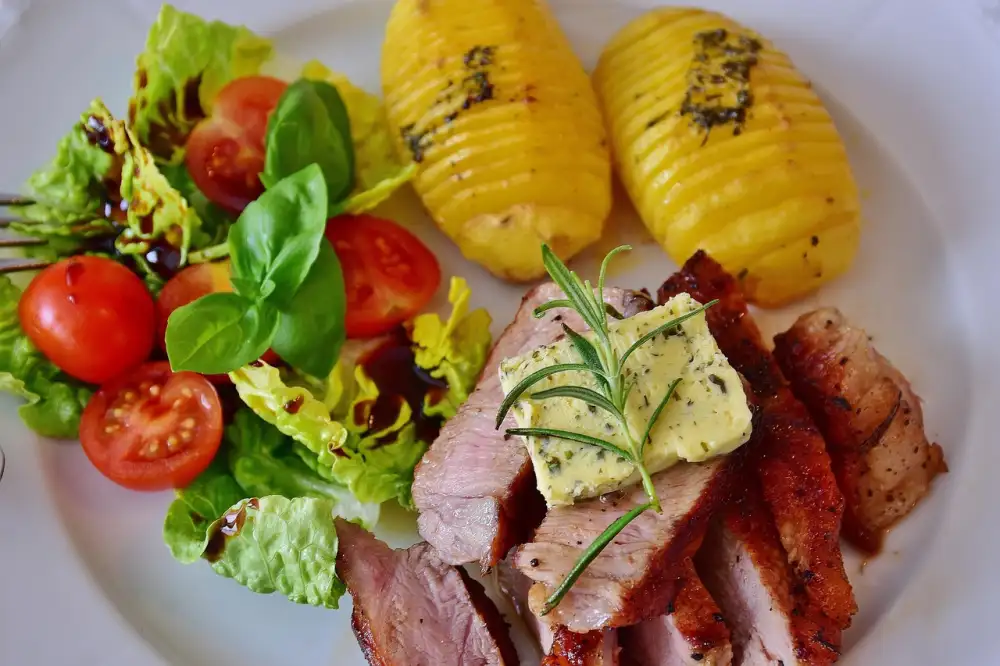Mastering the Art of Hasselback: Elevate Your Cooking Game with This Stunning Technique

The Hasselback technique is a culinary method that involves making thin, even cuts along the surface of a vegetable or protein, creating a stunning visual presentation and allowing for unique flavor infusion. Named after the Hasselbacken restaurant in Stockholm, Sweden, where it was first used on potatoes in the 1940s, this technique has since gained popularity worldwide for its combination of crispiness and tenderness. Mastering the art of Hasselback slicing can elevate your cooking game and impress your guests with both taste and aesthetics.
History and Origin of Hasselback Style
The Hasselback technique originated in Sweden and is named after the Hasselbacken restaurant in Stockholm where it was first introduced in the 1700s. The dish that made this style famous is the Hasselback potato, a simple yet elegant creation of thinly sliced potatoes baked with butter, breadcrumbs, and seasonings. The method was initially applied to potatoes but has since been adapted to various vegetables and even meats. Today, the Hasselback style is celebrated for its visually appealing presentation and delicious taste, making it a popular choice for home cooks and professional chefs alike.
Benefits of Hasselback Slicing
The Hasselback slicing technique offers several benefits that make it a popular choice among home cooks and chefs alike. Firstly, by making thin, even cuts along the surface of vegetables, such as potatoes or zucchinis, you increase the surface area exposed to heat. This results in a quicker cooking time and allows for more even cooking throughout the vegetable.
Additionally, Hasselback slicing creates a visually stunning presentation that can elevate any dish from ordinary to extraordinary. The accordion-like appearance of Hasselback vegetables not only looks impressive on the plate but also enhances the texture of the dish, providing a perfect balance between crispy edges and soft interiors.
Moreover, Hasselback slicing allows for easy customization and flavor infusion. By tucking herbs, spices, cheeses, or other ingredients into the cuts of the vegetable before baking or roasting, you can add layers of flavor that permeate through every bite. This technique provides endless possibilities for creativity in the kitchen and ensures a delicious outcome with every dish prepared using the Hasselback method.
Popular Vegetables for Hasselback Preparation
While potatoes are the most well-known choice for Hasselback slicing, other vegetables can also be transformed into stunning dishes using this technique. Sweet potatoes offer a flavorful twist with their natural sweetness and vibrant color. Carrots become elegant and sophisticated when Hasselbacked, showcasing their natural sweetness and tender texture. Zucchini and eggplant are excellent choices for a lighter option, perfect for those looking to add variety to their meals. The versatility of the Hasselback technique allows you to experiment with different vegetables, creating visually appealing and delicious dishes that will impress your guests.
Step-by-Step Guide to Hasselback Potatoes
1. Choose medium-sized, evenly shaped potatoes for best results.
2. Wash and scrub the potatoes thoroughly to remove any dirt.
3. Place a potato on a cutting board and make thin, parallel cuts across the length of the potato, making sure not to slice all the way through. Pro tip: place chopsticks on either side of the potato to prevent cutting all the way through.
4. Preheat the oven to 425°F (220°C).
5. Brush the potatoes with melted butter or olive oil, ensuring it gets into the slits.
6. Season with salt, pepper, and any desired herbs or spices.
7. Bake for about 45-60 minutes until the potatoes are crispy on the outside and tender on the inside.
8. Optional: Add cheese in between the slices during the last 10-15 minutes of baking for a gooey finish.
9. Serve hot and enjoy your beautifully presented Hasselback potatoes!
Variations and Seasoning Ideas for Hasselback Dishes
The beauty of the Hasselback technique lies in its versatility, allowing for endless variations and seasoning possibilities. For a classic twist, try topping your Hasselback potatoes with melted butter, garlic, and fresh herbs like rosemary or thyme. For a cheesy indulgence, sprinkle grated Parmesan or cheddar cheese between the slices before baking.
To add a spicy kick, consider mixing paprika, cayenne pepper, or chili flakes into your seasoning blend. For a Mediterranean flair, drizzle olive oil over the potatoes and sprinkle with oregano, lemon zest, and feta cheese after baking. Experiment with different combinations of spices, herbs, cheeses, and oils to create unique flavor profiles that suit your taste preferences.
Remember to season generously as the cuts in the vegetables allow the flavors to penetrate deeply. Whether you prefer savory, spicy, herby, or cheesy dishes, the Hasselback technique offers a canvas for culinary creativity that is sure to impress your taste buds and elevate your cooking game.
Hasselback Recipes for Different Occasions
Hasselback recipes are versatile and perfect for any occasion. For a cozy night in, try Hasselback sweet potatoes with maple glaze and pecans. For a fancy dinner party, impress your guests with Hasselback butternut squash stuffed with quinoa and cranberries. Hosting a summer barbecue? Grill up some Hasselback zucchini with Parmesan and herbs. And for a festive holiday meal, serve up Hasselback acorn squash drizzled with cinnamon butter. With endless possibilities, the Hasselback technique is sure to elevate your cooking game no matter the event!
Tips for Perfecting the Hasselback Technique
1. Sharp Knife: A sharp knife is essential for clean and precise cuts when making Hasselback dishes. This will help prevent the vegetable from breaking or crumbling during the slicing process.
2. Partially Cook Vegetables: To ensure that the vegetables cook evenly, consider partially cooking them before making Hasselback cuts. This will help speed up the cooking process and result in a more consistent texture.
3. Use a Wooden Spoon Trick: Placing a wooden spoon on either side of the vegetable can act as a guide to prevent cutting all the way through when making Hasselback slices. This will help maintain the shape of the vegetable while creating those beautiful accordion-like cuts.
4. Season Generously: Don't be afraid to season your Hasselback vegetables generously with herbs, spices, olive oil, or butter before baking. The nooks and crannies created by the slices allow for flavors to penetrate deeply into the vegetable, enhancing its taste.
5. Monitor Cooking Time: Keep an eye on your Hasselback dish while it's baking to prevent overcooking or burning. Covering with foil initially can help retain moisture before finishing uncovered for a crispy finish.
By following these tips, you'll be well on your way to mastering the art of Hasselback cooking and impressing your guests with visually stunning and delicious dishes!
In conclusion, mastering the art of Hasselback slicing can truly elevate your cooking game and impress your guests with visually stunning and delicious dishes. The Hasselback technique not only enhances the presentation of your food but also allows for even cooking and a unique texture. Whether you're a beginner or a seasoned chef, trying out different vegetables, seasonings, and recipes using the Hasselback method can bring a new level of creativity to your culinary creations. So why not give it a try and explore the endless possibilities that this technique has to offer in your kitchen? Happy cooking!
Published: 13. 03. 2024
Category: Recipes



